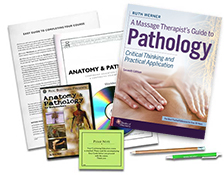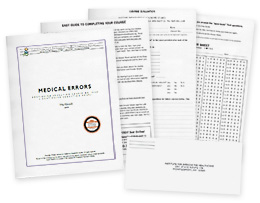 Want to earn continuing education credit for this article? Learn more.
Want to earn continuing education credit for this article? Learn more.
Massage therapists are well aware that helping to bring health and well-being to people is filled with infinite rewards. However, bodyworkers also must be cautious of the risks associated with tissue manipulation. Perhaps one of the greatest contraindications for massage therapy is someone who is at high risk for having a cerebrovascular accident – otherwise known as a stroke. Responsible practitioners typically memorize the list of conditions that are riskiest for this potentially devastating event and require a physician’s consent for those affected. However, there is no guarantee that a seemingly healthy client won’t fall victim to an unexpected stroke. Because every minute counts when seeking medical treatment for a cerebrovascular accident (CVA), therapists who can recognize early stroke signs are best equipped to prevent such a health crisis.
Cerebrovascular Accident
Stroke is the number one cause of adult disability and the fifth leading cause of death in the United States. Occurring when the blood flow to the brain is impaired by a blockage or rupture of an artery to the brain, the resulting lack of oxygen suddenly kills brain cells.
Sometimes referred to as a brain attack, a CVA impacts the brain in much the same way a heart attack impacts the heart. Every stroke is different and is largely dependent upon the area of the brain affected and the length of time that area was without oxygen. Strokes typically belong to one of two categories:
- Transient Ischemic Attack (TIA) – A TIA is often referred to as a warning stroke, occurring when a blood clot blocks an artery for a short period of time. While the symptoms are much like a major stroke, they last for a shorter period of time.
- Hemorrhagic Stroke – Also referred to as a major stroke, a hemorrhagic stroke occurs when a blood vessel ruptures and bleeds deep in the brain or on the surface of the brain.
CVA Risks
Although strokes can affect people of all ages, genders and races, there are some risk factors that make some more vulnerable than others. The more risk factors a person has, the greater their chances are of having a stroke. While some factors are beyond a person’s control, others can be manipulated to lower a person’s risk:
The major known stroke risks include:
- Increasing age – especially over age 55
- Male sex
- Race – specifically African American
- Family history of stroke
- Cigarette smoking
- Obesity
- High blood pressure
- Diabetes
- History of TIAs
- High cholesterol
- Heart Disease
- Peripheral Artery Disease
- Deep Vein Thrombosis
Stroke Recognition
Every 40 seconds, someone in the United States has a stroke and someone dies of stroke every four minutes. While awareness of the risks for a stroke can help you better identify massage contraindications, there is no way to predict who will fall victim to a CVA or when it will occur. Sometimes, those who you would least expect have a stroke. Thus, knowing all the warning signs of a stroke could help you save someone’s life and/or well-being.
The faster you can recognize the symptoms of a CVA, the sooner medical help can be sought. Because there is only a three-hour window to administer clot-busting drugs for diminishing the effects of a stroke, prompt treatment is crucial. With quick medical treatment for a stroke, the brain can be shielded from extensive damage, which can spare death or serious disabilities such as paralysis, speech impairment and dementia.
The beginning of a cerebrovascular accident can be recognized by any of the following ten signs. Please note, the first three automatically indicate a stroke, while the subsequent seven signs could signal a CVA:
- Crooked smile – One side of the mouth doesn’t move well or appears to droop when smiling
- Arm drift – With eyes closed and the client’s arms held straight out in front for approximately 10 seconds, one arm does not move, or one arm drifts down more than the other
- Slurred speech – When attempting to repeat a simple sentence, the words are slurred, incorrect or don’t come at all
- Sudden weakness – Sudden weakness in an arm, hand or leg
- Numbness – The inability to feel one side of the face or body
- Sudden blindness – The sudden inability to see out of one eye
- Trouble walking – Sudden difficulty walking
- Does not comprehend – The inability to understand what someone is saying
- Vertigo – Feelings of dizziness or loss of balance
- Headache – Having the worst headache ever
If you suspect a client is having a stroke, call 911 for immediate help! In addition, record the time when you started seeing symptoms to help establish where a person may be within the three-hour treatment window.
When it comes to caring for your client’s health and well-being, recognizing the warning signs of a stroke – especially a crooked smile, arm drift and slurred speech – can yield an unparalleled level of gratitude for both the practitioner and the client. Massage therapists are not expected to be emergency medical technicians. However, being able to identify this kind of emergency could save your client’s life – or at least preserve his or her livelihood.
 Earn continuing education credit for this article contained in our Geriatric Precautions series. Click here to enroll.
Earn continuing education credit for this article contained in our Geriatric Precautions series. Click here to enroll.














